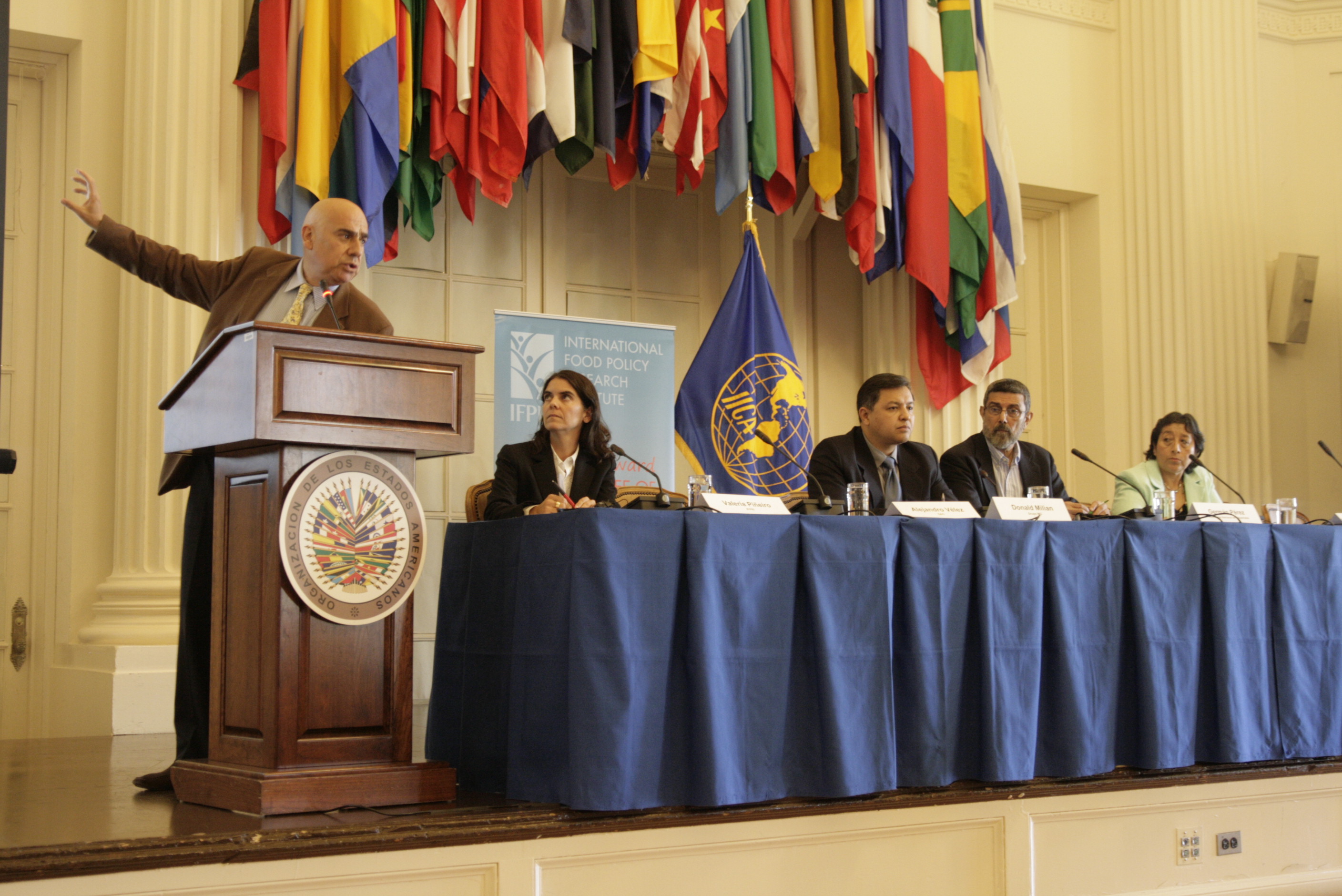Better equipment can help farms sustainably reach their productive potential and raise household income. In Latin America, where levels of agricultural mechanization vary widely, systematically improving access to equipment could have benefits across the region. A Nov. 4 seminar, “The Present and Future on Agricultural Mechanization in Latin America,” sponsored by the Inter-American Institute for Cooperation on Agriculture (IICA) and IFPRI, examined how to meet this challenge while making agriculture more competitive and sustainable. Participants included producers, manufacturers, machinery service providers, and policymakers.
Agricultural mechanization is poised to be a major driver of development in Latin America. By boosting productivity, it can in turn spur further farming investments in a virtuous circle. It can also help generate higher wages because it requires more skilled labor, and can create and strengthen linkages with other service sectors such as input suppliers, repair shops, and machinery parts suppliers. Thus, mechanization goes hand-in-hand with overall agricultural market development.
But Latin America’s agricultural productivity currently lags far behind that of the United States, a gap that owes much to the U.S.’s superior machinery, participants said. Within Latin America, productivity also varies between countries depending on levels of mechanization, production systems and crops, average farm size, and agroecological conditions. The three latter factors also affect the types of machines being used.
These complex variations create many obstacles to farmers who want to upgrade their tools.
Regional demand for machinery, for instance, focuses mainly on standardized equipment that can be adapted to multiple crops: tractors, harvesters, and sprayers. But one-size-fits-all equipment won’t be appropriate for all crop types or soil conditions. Carlos Pomareda and Hugo Lipun of the Regional Fund for Agricultural Technology (FONTAGRO) listed small, remote, or hilly plots and plots dedicated to horticultural production as among those most in need of different, more expensive machinery.
In addition, small producers may not have the money or access to credit to invest in “smart” technologies—such as soil analysis, optimal seed distribution systems, and individual plant monitoring— that can complement the machinery they have.
Governments throughout the region have recognized these constraints and instituted programs to help increase small farmers’ access to financing. For example, Verónica Santillán, delegate of the Ministry of Agriculture, Livestock, Aquaculture and Fisheries of Ecuador, described a program through which the Ecuadorian government makes farm machinery available for purchase without tax; farmers’ associations can also access flexible loans with interest rates of 9 percent to purchase this equipment.
The conference emphasized the importance of increased integration between producers, manufacturers, and service providers. Machine service providers, for example, play an important role in getting farmers to adopt state-of-the-art technology. The temporary contracts and technical support they provide increase farmers’ access to modern machinery and act as a risk-sharing and financing mechanism. Producers in Latin America are also renting and leasing machinery and using service centers more frequently, and more are using mobile phone mechanization apps (similar to Trringo in India and Hello Tractor in Africa).
Accelerating the adoption of better machinery will require more public and private investment, and more transparent regulatory environments, participants agreed. In addition to easing regulations and increasing investment, the participating producer organizations emphasized that contracts need to be standardized to protect the interests of smaller actors.
Better infrastructure—roads, ports, irrigation systems, storage facilities, and telecommunications—will also be crucial in ramping up mechanization. María Lucila Quintana, a representative of Conveagro, a producers’ organization in Peru, noted that the lack of road infrastructure limits access to machinery in some areas. Improving infrastructure will also help ensure that the higher yields produced through mechanized agriculture can effectively reach markets. Participants also agreed that producers should receive more training on how to use more modern agricultural technologies.
Sara Gustafson is a Communications Specialist with IFPRI’s Markets, Trade, and Institutions Division.







